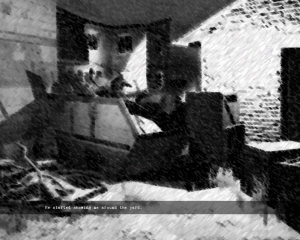Gamescom 2017 round-up: Part 2 page 3
Events Coverage
Reporting from E3, GDC, AdventureX, Gamescom and other gaming events around the world

With so many promising adventures to see at gamescom 2017, we just couldn’t cover them all in a single article. Our first round-up featured games like The Inner World 2, Tokyo Dark and Unforeseen Incidents, but there were plenty more where those came from. So once again, my German colleagues Matthias Glanznig and Peter Färberböck from Adventure Corner have joined forces with me to highlight another impressive range of games on display in Cologne.
Call of Cthulhu
by Peter Färberböck
Focus Home Interactive invited us to have look at their new horror adventure game Call of Cthulhu, developed by Cyanide Studio. They pointed out a fitting description of it as well as the Lovecraft universe itself: The struggle against insanity. Narratively speaking, the game is based on the pen & paper roleplaying game of the same title. Thus, Cyanide mentioned proudly that Mark Morrison, one of the most well-known authors for the RPG, helped them out with their story. We got a look at the second chapter through the eyes of the main character. It all takes place in a small village on an island called Darkwater.
In the spirit of H. P. Lovecraft, the game is set during prohibition in the 1920s, when private detective Edward Pierce arrives at the gloomy port village. Dark clouds overshadow the whole island. Mud is all over the place and the inhabitants are not that friendly towards the detective – he is an outlander after all. Lovecraftians will most likely appreciate the familiar dark setting.
 Recently Pierce found a mysterious painting in his mail, painted by Sarah Hawkins, whose family has an estate on the island. Here the investigation begins and Edwards wants to understand what that painting’s mystery is about. As Pierce openly explores the island, different approaches are possible. We might, for example, just try to get an inhabitant’s trust by going into the inn and treating some talkative guy to a drink. We could also try to gain trust by helping other people. It is up to the player.
Recently Pierce found a mysterious painting in his mail, painted by Sarah Hawkins, whose family has an estate on the island. Here the investigation begins and Edwards wants to understand what that painting’s mystery is about. As Pierce openly explores the island, different approaches are possible. We might, for example, just try to get an inhabitant’s trust by going into the inn and treating some talkative guy to a drink. We could also try to gain trust by helping other people. It is up to the player.
Coming into the presentation, we felt fairly let down that Call of Cthulhu was being referred to as an investigative RPG. Soon, however, we realized that while this horror game has skill trees and an open world, at its heart it still appears to be a more traditional first-person adventure game. There are no Quick Time Events or action sequences in it – everything revolves around investigating the island and solving different cases. Many details reminded us of the Sherlock Holmes series from Frogwares. There are a lot of dialogues and the trusty old radial menu once again controls them. It seems like every single character can be talked to, but that does not automatically imply that the conversation will help the investigation.
 Call of Cthulhu allows us to tailor our detective to our needs and preferred playing style, thanks to the four skill trees (Talk, Clue, Examine and Physical) in the game. These skills can alter our different opportunities. We could get new choices during various dialogues or we might be able to examine and understand inscriptions, old texts or even corpses. Not every single skill can be acquired during one playthrough. Cyanide emphasised repeatedly that the game has no combat. Even the Physical tree is used solely during dialogues or for lock picking. You might get into a brawl if you use those dialogue choices, but they are resolved automatically. Violence is never necessary, but a viable option to advance the investigation.
Call of Cthulhu allows us to tailor our detective to our needs and preferred playing style, thanks to the four skill trees (Talk, Clue, Examine and Physical) in the game. These skills can alter our different opportunities. We could get new choices during various dialogues or we might be able to examine and understand inscriptions, old texts or even corpses. Not every single skill can be acquired during one playthrough. Cyanide emphasised repeatedly that the game has no combat. Even the Physical tree is used solely during dialogues or for lock picking. You might get into a brawl if you use those dialogue choices, but they are resolved automatically. Violence is never necessary, but a viable option to advance the investigation.
Similar to other roleplaying games, this horror adventure has various factions. For example, the police do not fancy Edward or any private investigators, therefore we should stay low-key. Smugglers are dubious and unfriendly but we can do some work to befriend them. Edward is also able to spy on some characters to learn new dialogue options and gain additional choices. Certain deeds might also influence his reputation. However, this is a Lovecraft tale, so we also need to mind Edward’s sanity. Some tasks may damage his mental stability, causing him to slip off into the realm of Cthulhu more and more. These hallucinations represent the horror elements of the game. Madness is the centrepiece of them and the developers are trying to trigger a certain subtle kind of fear.
We will not have to hide behind crates to let monsters pass, but we will have to take care of Pierce’s unstable psyche. To make things a bit more comfortable, he always carries along his trusty lighter, but as the player, we are kept in the dark about whether what we’re seeing is real or just an illusion. Cyanide wants to give us the feeling that we are inside a new story by H. P. Lovecraft. They want to create a unique tale and even suggested that fans might see an Elder One of the old aliens/deities from the Lovecraft universe.
Call of Cthulhu caught us by surprise, especially since we were not quite sure what kind of game we could expect before the event. Now it is quite clear that it can be considered an adventure that completely omits action sequences. Imagine the Sherlock Holmes adventures from Frogwares in the Lovecraftian universe, then you get the picture. Essentially, we can expect a game with subtle horror elements and loads of investigation in a rather open world. It is an ambitious project and it already looks quite good. It is definitely one to watch.
Detective Gallo
by Ingmar Böke
This year’s gamescom enabled me to check out the 2D point-and-click adventure Detective Gallo from Italian studio Footprints. While the game borrows familiar elements from hard-boiled detective stories, it certainly spices things up with aspects you wouldn’t quite expect from a Philip Marlowe or Sam Spade story. Like, for example, the game’s protagonist Detective Gallo – a feathered, ill-tempered P.I. who would prefer to just shoot people instead of solving cases. As you can probably tell, Gallo is not exactly a pleasant person – or rather, duck – so he probably chose a cactus as his sidekick and best friend because the cactus is unable to disagree with anything Gallo says.
 |
Adventure Productions' Adriano Bizzoco |
In meeting with publisher Adventure Productions, Adriano Bizzoco gave me a quick introduction to the game and let me play a demo afterwards. Right away, it was easy to tell that the hand-drawn graphics were created by people who know their craft. Being a huge fan of Disney’s original DuckTales series as a kid, I had kind of a déjà vu when I looked at some of the characters in the game. That impression was confirmed when Adriano named the show an important visual influence before he moved on to the general impact that LucasArts classics had on the game.
After watching a fancy black-and-white intro, I literally got thrown into the game. Well, to be precise, the slightly sociopathic detective was kicked out of a bar. A few seconds later, I entered Gallo’s office and ran into an unknown visitor. Luckily, he was able to reveal himself as a potential client before Gallo could riddle him with bullets for trespassing. As it turns out, that visitor was a multi-billionaire named Phil Cloro, who wanted Gallo to solve a blood-curdling crime: the murder of Cloro’s favorite plants. Sounds nuts? Absolutely! Seemingly in a rather entertaining way, though!
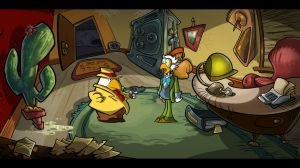 Once the new client left, I was alone in Gallo’s office. Just as in the few other locations I saw, I noticed that this small scene contained lots of hotspots. I particularly liked that there was a lot of unique feedback to my actions, containing plenty of wicked comments and hints from Gallo. To interact with the environment, a simple two-button interface (look, use) comes into play. The inventory can be accessed by moving the mouse cursor to the upper part of the screen. In terms of the puzzles, I was only able to get a brief glimpse, but as new items ended up in my collection, it seems safe to say that inventory puzzles are going to be an important part of the final game.
Once the new client left, I was alone in Gallo’s office. Just as in the few other locations I saw, I noticed that this small scene contained lots of hotspots. I particularly liked that there was a lot of unique feedback to my actions, containing plenty of wicked comments and hints from Gallo. To interact with the environment, a simple two-button interface (look, use) comes into play. The inventory can be accessed by moving the mouse cursor to the upper part of the screen. In terms of the puzzles, I was only able to get a brief glimpse, but as new items ended up in my collection, it seems safe to say that inventory puzzles are going to be an important part of the final game.
One puzzle chain started with the discovery of a bullet at the crime scene. The bullet had an engraving that I was not able to read. Fortunately, Gallo’s microscope seemed like a good way of magnifying the inscription. Too bad the microscope was in the P.I.’s office safe, and the detective can’t remember the code. Well, at least the grumpy protagonist hints that he has hidden three reminders in the room that – in combination – will reveal the correct code. But even discovering those required a bit more than just clicking on things to find the three hints and open the safe. One reminder, for instance, was easy to find, but it had been bleached out, so I needed to find a way of making it readable again.
Musically, Detective Gallo features a mandatory jazz soundtrack that suits the noir setting, but what really impressed me was the quality of the English voice acting, which seemed to do justice to the absurd humor without becoming unintentionally funny. As I was told, the developers are currently putting the finishing touches on the cut-scenes and voice-overs. At gamescom, Detective Gallo certainly left a positive impression on me, and I suggest that fans of traditional 2D point-and-click adventures should keep an eye on its planned November 2017 release.
Orwell: Ignorance is Strength
by Ingmar Böke
The episodic surveillance thriller Orwell was one of my highlights from 2016’s fair. As the second season, Orwell: Ignorance is Strength, had been announced right in time for gamescom 2017, I was eager to unravel some details on the follow-up effort. Luckily, I got what I was hoping for as Osmotic Studios’ Mel Taylor showed me a preview build of the sequel and gave me a good idea of what to expect. To come straight to the point: I was no less intrigued by what I saw this time around than I was last year.
 |
Osmotic Studios' Mel Taylor |
Anyone who deals with the works of visionary writer George Orwell (1903-1950) in the present day is unavoidably going to be confronted with many issues of our modern world – including the detestable prevalance of fake news. Certainly, with Ignorance is Strength, the ambitious German developers have their finger on the pulse of today's society once again. Yet they’re spicing things up by keeping the surveillance aspect of the first season while adding new contemporary themes to the mix, as well as some time-critical elements for a little added tension.
Once more, players are commissioned by “The Nation” to spy on potential suspects who might mean harm to the country. Using the surveillance OS Orwell, we are going to delve deeper and deeper into people’s lives – for example, by monitoring phone calls, chat conversations and e-mails, or by accessing private files on computers and mobile phones. While season one focused on a bombing in the interior of the Nation, season two relates to events taking place at the same time in the neighboring country of Parges. If the name sounds familiar, there is good reason for that as season one contained several references to the destabilized Parges and the suffering of its citizens. I was told that profiles and choices made in the first game can optionally be imported to Ignorance is Strength. Since both stories take place simultaneously, and no further info is available yet, though, we’ll have to wait and see whether our decisions from the premier season will influence the successor in meaningful ways.
 The tagline “Ignorance is Strength” underlines that the game still deals with some very contemporary themes, including fake news and how the reception of news can change depending on individual social media bubbles. One character that is going to play an important role during your investigations is the editor-in-chief of “The People’s Voice”, a populist blogger from Parges who blames the Nation for the citizens’ misery. Using this man as an example, Mel mentioned the importance of gray areas when it comes to characters and their motivations. The more we find out about the blogger in question, for example, the more we come to understand his personal backstory, and as a result, this might change the way we look at some of his actions. Having said that, Ignorance is Strength will repeatedly ask players whether “the end justifies the means.” This applies not only to the events we observe, but also to our own actions, such as whether we’re willing to post fake news ourselves to accomplish a certain objective.
The tagline “Ignorance is Strength” underlines that the game still deals with some very contemporary themes, including fake news and how the reception of news can change depending on individual social media bubbles. One character that is going to play an important role during your investigations is the editor-in-chief of “The People’s Voice”, a populist blogger from Parges who blames the Nation for the citizens’ misery. Using this man as an example, Mel mentioned the importance of gray areas when it comes to characters and their motivations. The more we find out about the blogger in question, for example, the more we come to understand his personal backstory, and as a result, this might change the way we look at some of his actions. Having said that, Ignorance is Strength will repeatedly ask players whether “the end justifies the means.” This applies not only to the events we observe, but also to our own actions, such as whether we’re willing to post fake news ourselves to accomplish a certain objective.
Once again, nearly the entire game will take place within the Orwell OS. Due to its high accessibility, even newcomers to the series should have no problem getting used to the interface. The screen is still split into two halves: while the left side shows Orwell’s database, the right allows us to go back-and-forth between all our different sources of information. Potentially relevant bits are automatically highlighted and can be transferred to Orwell via drag-and-drop. Once new information is added to the OS, it can’t be removed anymore, and the data can be accessed by our superior who – in some cases – will take further action against suspects.
Visually, Ignorance is Strength sticks with the characteristic polygon look of the original season. While season one didn’t have any kind of voice recording, the new season is at least going to have some voiced elements, though I was not able to hear any of it at this point. Unlike before, players will now need to figure out passwords for secure sources. There is no need for a text parser, though, as passwords will also be assembled via drag-and-drop. To create more tension throughout the season, and make particular choices even harder, several time-critical sequences are going to be included. Taylor explained that this is also supposed to result in a higher level of replayability, as it will require more than one playthrough to see the different outcomes of such scenes.
Just like in season one, publisher Surprise Attack Games is again planning to release the game episodically on a weekly basis, but as Mel told me, the sequel is only going to contain three episodes instead of five. With the technological framework that was laid out for the original game allowing the team to produce new content a lot faster, the current plan is to release Orwell: Ignorance is Strength for Windows, Mac and Linux around the end of 2017. Based on what I saw, if you’re a fan of the first season, it seems there are many excellent reasons to look forward to Orwell’s return!
Jengo
by Matthias Glanznig
Robot Wizard is working on Jengo, a point-and-click adventure game in the spirit of the old genre classics of the 1980s and 1990s. While this project still has a long way to go, the first few minutes were already playable at gamescom.
 In this story we play Jeff, an old-school gamer hoping to find a game in a local store. Unfortunately, no one around seems to share his passion for old games. DLC, dating games, and other modern trends are certainly not what this diehard gamer is looking for. After a few disappointing conversations, Jeff relocates his search elsewhere and ends up in a weird little shop, where a mysterious Asian guy invites him to play a very retro-looking game. Little does Jeff know that this is no ordinary game. As the computer activates, a portal pops up and pulls him right into a different world. After a short cut scene, he finds himself in a town called Old Meta, which looks like an Old Western town. Old Meta is a lonely place at the edge of the Pixelverse, and soon Jeff realizes that the end is near and only he can fight the pixel apocalypse.
In this story we play Jeff, an old-school gamer hoping to find a game in a local store. Unfortunately, no one around seems to share his passion for old games. DLC, dating games, and other modern trends are certainly not what this diehard gamer is looking for. After a few disappointing conversations, Jeff relocates his search elsewhere and ends up in a weird little shop, where a mysterious Asian guy invites him to play a very retro-looking game. Little does Jeff know that this is no ordinary game. As the computer activates, a portal pops up and pulls him right into a different world. After a short cut scene, he finds himself in a town called Old Meta, which looks like an Old Western town. Old Meta is a lonely place at the edge of the Pixelverse, and soon Jeff realizes that the end is near and only he can fight the pixel apocalypse.
In the short demo, we saw many allusions to the good old days and as with every traditional adventure game, story and puzzles are the core of the gameplay. On PC you will be able to play with the mouse. There is going to be an action wheel which is quite similar to the verb coin interface known from Full Throttle and Curse of Monkey Island. From what we could see, the visuals and jokes definitely appear to be in the vein of the classics, from LucasArts to Sierra. At the same time, the comic art style does its own part and feels fresh. Jengo also deals with other genres that had a rivalry going on with adventure games back then (for example shooters like Doom). The first minutes were promising, and we are curious to see how the game further evolves.

Initially, the plan was to release Jengo in episodes, but that idea has changed. The small indie studio from South Africa now wants to release one complete game on PC, Xbox One, PlayStation 4, and Switch. English voice-overs can be expected. Currently, they are preparing a demo for their upcoming crowdfunding campaign. If everything is going as planned, Jengo might even be ready next year.
Unknown Fate
by Matthias Glanznig
Unknown Fate is a 3D first-person adventure game developed by MarsLit Games, a small Italian indie studio founded by two brothers, Andrea Farid Marsili and Marco Karim Marsili. At gamescom, Andrea Farid showed us several parts of their first game. Although it is made for virtual reality (HTC Vive, Oculus Rift, OSVR), a VR device will not be required and we saw the regular PC version.
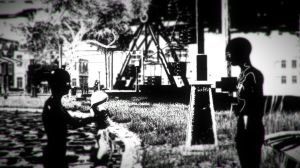 Richard is the main character. One day he passes from the real world into a surreal universe. At first, it feels like a very strange and unfamiliar place to him, but the more time he spends there, the more it becomes obvious that everything here is somehow related to his former life. Most of his dark surroundings feel like a weird mix of dream and reality. He also experiences memories from his life, shown in black and white. Many details here, like a shooting gallery in an amusement park, are a reminder of things we have seen in the surreal world. In order to return back to reality, Richard needs to understand how everything is connected.
Richard is the main character. One day he passes from the real world into a surreal universe. At first, it feels like a very strange and unfamiliar place to him, but the more time he spends there, the more it becomes obvious that everything here is somehow related to his former life. Most of his dark surroundings feel like a weird mix of dream and reality. He also experiences memories from his life, shown in black and white. Many details here, like a shooting gallery in an amusement park, are a reminder of things we have seen in the surreal world. In order to return back to reality, Richard needs to understand how everything is connected.
One thing is certain: Unknown Fate is not going to be a traditional adventure game but it's not going to be a walking simulator either. Exploration is an important aspect, and you will have to do a lot of puzzle-solving. Sometimes even jumping is required to overcome an obstacle. Over the course of the story, Richard learns new powers that allow him to interact with the environment in different ways. These abilities are relevant for certain puzzles. For example, through telekinesis he can move heavy objects, or he can shoot energy balls in order to activate certain mechanisms.
While story, exploration, and puzzles are the key features of Unknown Fate, there are also going to be a few opponents to defeat. According to Andrea Farid, these confrontations are closely linked to the protagonist's past and feel sort of like puzzles themselves. However, we only saw glimpses of these action elements and not enough to form a more elaborate opinion. The trailer released for gamescom below offers a clearer picture of the type of gameplay we can expect.
Visually, the game looks quite decent, especially if you consider that most of it has been done by only two people without much prior experience in this field. Although sometimes still a bit rough around the edges, the dreamlike environments create a promising dark atmosphere and the art style is consistent and original. Overall, we definitely enjoyed the presentation.
MarsLit Games intends to release the game soon, maybe even this year. Published by 1C Company, Unknown Fate is going to be available with optional VR support on Windows, Mac, PlayStation 4 and Xbox One.
Inmates
by Matthias Glanznig
Before our Blackenrock appointment, publisher Iceberg Interactive showed us a playable build of their new first-person horror adventure game from Armenia, called Inmates. Game developer Davit Andreasyan was present and told us that he had been working alone on it for 26 months. Currently he is aiming for release on PC in fall 2017.
 Inmates tells the story of Jonathan, who finds himself alone in a prison. At first, he doesn't seem to know where he is, or what brought him to this dark and very unfriendly place. A headache and dizziness plague him. While exploring the environment we get to know him a bit better, for example through personal notes and pictures that can be found in many places throughout the prison. Over time, surreal events become more and more frequent, including Jonathan experiencing hallucinations of other people. Of course, we'll have to wait for the final version of the game to see how it all adds up.
Inmates tells the story of Jonathan, who finds himself alone in a prison. At first, he doesn't seem to know where he is, or what brought him to this dark and very unfriendly place. A headache and dizziness plague him. While exploring the environment we get to know him a bit better, for example through personal notes and pictures that can be found in many places throughout the prison. Over time, surreal events become more and more frequent, including Jonathan experiencing hallucinations of other people. Of course, we'll have to wait for the final version of the game to see how it all adds up.
According to Andreasyan, Inmates is inspired by horror adventure games from the 1990s and movie classics like The Shining. A psychological type of horror can be expected, one that does not depend on jump-scares. Aside from story, exploration and puzzles, there is not going to be much action in Inmates, except maybe the necessity to hide in a few situations. Unfortunately, we can't say a lot about the complexity of its puzzles yet, as we didn't see much of that personally. However, playing through the game is supposed to take around five hours.
Given the fact that most of the game was developed by only one person, it may not come as a big surprise that the graphics and animations are still rough around the edges at this point. And while there is English voice acting guiding us through the horror scenario, some of the voice lines did not sound very convincing at all. Still, the more important question is how the horror actually plays out, and it would be a bit premature to say much about that, as gamescom is not the best place to really experience suspense and fear. We are nonetheless very curious to see how the horror and atmosphere will work, and whether Inmates is able to distinguish itself from other horror games in a positive way.
My Memory of Us
by Peter Färberböck
According to Juggler Games, their aim is to create outstanding narrative games with engaging mechanics. Their showcase for that strategy is a game called My Memory of Us, about two children, a girl and a boy, trying to flee their war-torn country together. We were able to take a look at gamescom.
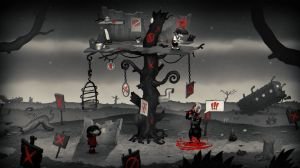 The game is more of a narrative puzzle-platformer and less of a classic adventure game. Still, My Memory of Us does have a quite a rich story in which an evil king starts a world-spanning war and robot soldiers invade the protagonists’ country. Groups of people are forced to resettle and now have to live behind high walls. Not coincidently, the robot soldiers look like Nazis (in the style of the anime Jin-Roh) and the featured areas within the walls very much resemble Jewish ghettos in Poland. As the developers themselves are from southern Poland, it is quite clear that the game is really about Jewish kids fleeing a Polish ghetto during World War II. There will even be quite historically famous Jewish Poles featured in the game, such as orphanage director Janusz Korczak and resistance fighter Irina Sendlerowa. Still, Juggler wanted to stress that this is not a game about the Holocaust, because they want no age restrictions for the game. Instead, this is a pseudo-fictional setting filled with strange machinery.
The game is more of a narrative puzzle-platformer and less of a classic adventure game. Still, My Memory of Us does have a quite a rich story in which an evil king starts a world-spanning war and robot soldiers invade the protagonists’ country. Groups of people are forced to resettle and now have to live behind high walls. Not coincidently, the robot soldiers look like Nazis (in the style of the anime Jin-Roh) and the featured areas within the walls very much resemble Jewish ghettos in Poland. As the developers themselves are from southern Poland, it is quite clear that the game is really about Jewish kids fleeing a Polish ghetto during World War II. There will even be quite historically famous Jewish Poles featured in the game, such as orphanage director Janusz Korczak and resistance fighter Irina Sendlerowa. Still, Juggler wanted to stress that this is not a game about the Holocaust, because they want no age restrictions for the game. Instead, this is a pseudo-fictional setting filled with strange machinery.
Players will control both kids, able to switch between these two anytime. However, progress is not that easy because the girl is afraid of the dark and the boy has their only light source. He can also climb, while the girl is taller and can run faster, which also applies when they are together holding hands. Therefore, cooperation between them is needed all the time. My Memory of Us is divided into 3 acts with a total of 18 levels, and usually the children will solve environmental puzzles to clear the path and get rid of the robot soldiers. The game also has some boss fights, but once again, these are also about solving puzzles. You can choose between mouse/keyboard and gamepad controls, though for now it will only be released on PC.
During the estimated play time of 3-6 hours, the action will be accompanied by a great contemporary original soundtrack. It is very much in the style of Jewish klezmer music with great clarinet tunes. There will be English voice-overs during cut-scenes, but none during gameplay as the NPCs only talk via symbols in speech bubbles. The graphics are beautiful as well, as Juggler is utilizing a black-and-white style just like cartoons or Polish comic books of the ‘50s. Sprinkled throughout will be some red splotches of colour, symbolizing the maturing of the children.
After one and a half years of work, the release of My Memory of Us is now on track for a Q1/Q2 release next year.
Forgotton Anne
by Peter Färberböck
At the Square Enix Collective booth, we saw Forgotton Anne, a new story-driven 2D adventure game from ThroughLine Games that mixes platforming and adventure gameplay. Its visuals closely resemble various anime series and games, especially its cinematic cut scenes. In Cologne, we had the opportunity to play the demo.
Forgotton Anne tells its story in a world of forgotten objects that mixes in a hint of steampunk with fantasy and anime visuals. Anne and Master Bonku are trapped in a lonely world of machines and abandoned buildings, seeking a way back home to the world of humans. So-called "Forgotlings" serve them in this very peculiar place; they are talking objects, like shoes and lamps and other things that have been lost and forgotten.
 One day, this magical place is attacked by rebels, causing chaos. Anne rushes out to keep order among her subordinates and to assess this critical situation. From this very moment on, we learn more and more about her own past and gain a better understanding of this world she now lives in.
One day, this magical place is attacked by rebels, causing chaos. Anne rushes out to keep order among her subordinates and to assess this critical situation. From this very moment on, we learn more and more about her own past and gain a better understanding of this world she now lives in.
It is probably safe to say that Forgotton Anne plays best with a controller, as a lot of jumping and climbing occurs. In addition to that, the protagonist is able to fly. You'll sometimes have to combine these abilities to reach your destination. While most of the challenges during the gamescom demo were easy to deal with, and this is not the type of game where dying appears to be an issue, some parts might require at least a bit of skill and timing.
Aside from that, we were never under the impression that we were simply running through just one of many procedural levels. All objectives are closely derived from the story, which relies a lot on cut scenes and fully-voiced dialogues with NPCs. According to writer Morten Brunbjerg, the script for this cinematic adventure game is approximately 400 pages long. Branching dialogues are the main reason for that.
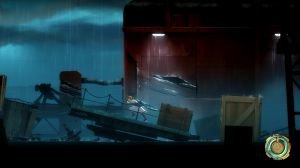 There is choice and consequence in the game. Naturally, the story won't change entirely and decisions are typically limited to two real alternatives, but still, it is possible to choose between life and death, or how you want to treat Forgotlings. Do you want Anne to be strict or more easygoing? It is your call. Even though the story won't be extraordinarily long (around six hours), details like this might justify a second playthrough for some players.
There is choice and consequence in the game. Naturally, the story won't change entirely and decisions are typically limited to two real alternatives, but still, it is possible to choose between life and death, or how you want to treat Forgotlings. Do you want Anne to be strict or more easygoing? It is your call. Even though the story won't be extraordinarily long (around six hours), details like this might justify a second playthrough for some players.
Puzzles are involved as well: Anne has the power to draw living energy from an object and move it, allowing her to fix and disable mechanisms, or even kill and revive Forgotlings. Usually there are several energy sources you can draw from, so it makes sense to explore the 2D environment first before you decide. This is one of several gameplay elements that are introduced along the way. There may even be some sliding puzzles.
While the gameplay of Forgotton Anne left a good first impression, what really stood out were the anime cut scenes. The games by Level-5 (like Professor Layton) come into mind, in the most positive way. Animations could be a bit smoother at times, but nevertheless, it is already impressive at this stage, particularly since this project from Denmark has neither a huge budget nor a huge team behind it.
Other than that, we enjoyed the intense orchestral soundtrack performed by the Copenhagen Philharmonic Orchestra a lot. The score does support the atmosphere quite nicely and contributes to a very sound overall impression.
There is no exact release date yet, but Forgotton Anne could be available on PC (Steam), Xbox One, and PlayStation 4 later this year. The first minutes of gameplay were very entertaining, and both story and presentation seem to intertwine in a convincing manner. People who enjoy the anime look and do not mind the platform aspects should definitely keep an eye on it.
Fredrik Olsson – Frictional Games
by Ingmar Böke
Frictional Games, the acclaimed creators of Penumbra, Amnesia and SOMA, were unfortunately not showing any new projects at the fair. Nevertheless, we made an appointment with Executive Producer Fredrik Olsson to get a glimpse behind the scenes into their activities. My video interview with Fredrik (filmed by Matthias) might not reveal what particular games the Swedish indie studio is currently working on, but it does offer some promising insights into their future plans as a company.
Other games and closing comments
In other gamescom news, I had the opportunity to watch a non-public trailer for the next FMV game by Splendy Games, creators of the live-action horror game The Bunker. Unfortunately, info on their new project is still top-secret, so I’m not really able to say more than that they’re working on a new interactive FMV thriller, which they’re hoping to release sometime in 2018.
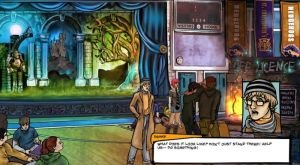 Once more I also had the pleasure of meeting with Laney Berry, who is currently putting the finishing touches on the “subversive, irreverent” point-and-click adventure The St. Christopher’s School Lockdown. Unfortunately, the light conditions during our appointment at gamescom’s beer garden were so unfavorable that I was not able to see what was happening on Laney’s notebook. What I can tell you is that the developers and their beta testers are currently working at full speed to launch the game sometime later this month. Which means there's still time to check out the PC demo (or the Mac demo), if you haven't already.
Once more I also had the pleasure of meeting with Laney Berry, who is currently putting the finishing touches on the “subversive, irreverent” point-and-click adventure The St. Christopher’s School Lockdown. Unfortunately, the light conditions during our appointment at gamescom’s beer garden were so unfavorable that I was not able to see what was happening on Laney’s notebook. What I can tell you is that the developers and their beta testers are currently working at full speed to launch the game sometime later this month. Which means there's still time to check out the PC demo (or the Mac demo), if you haven't already.
Like St. Chris, another game that we last saw at AdventureX is the black-humored adventure Lancelot’s Hangover. While I didn’t get to see the game in action at gamescom, I was able to spend some time with Belgian developer Jean-Baptiste de Clerfayt outside the actual fair. Naturally, I asked him about the current status of the project, and was told that he’s hoping to release the game in the first quarter of 2018. Keeping in mind that Lancelot’s Hangover is a one-man project, this isn’t a guaranteed timeframe, of course.
Personally, this year’s event turned out to be a blast once more. There were plenty of highlights during the week, whether related to games or not. Of course, I was able to see many promising titles – Life Is Strange: Before the Storm being my personal favorite – but more importantly, I was able to meet a lot of interesting and kind people from all over the world, whether at the actual fair, relaxing at a restaurant after a long day at gamescom, or at the annual Adventure-Treff party, which is always worth a visit. Heck, I even found out that Jonathan Boakes and Matt Clark are at least as crazy about Game of Thrones as I am, which lead to a very extensive discussion of the latest season!
I’d also like to send a big thank you to Matthias Glanznig and Peter Färberböck from Adventure Corner, who were great teammates and enabled us to cover way more games than we could have handled otherwise.
While this is our last round-up from gamescom 2017, a few more articles are still to come – including an interview about The Last Crown: Blackenrock, which at long last seems to be nearing completion after years of delays. For now, I hope that the variety on display here has offered something for each of you, no matter if you prefer your adventure gaming traditional or not. Hope to do it all again at gamescom 2018!






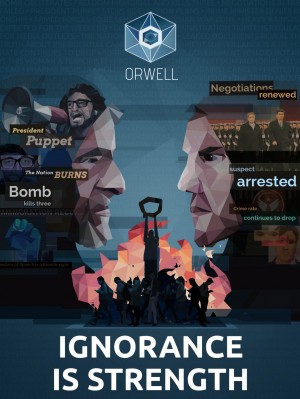

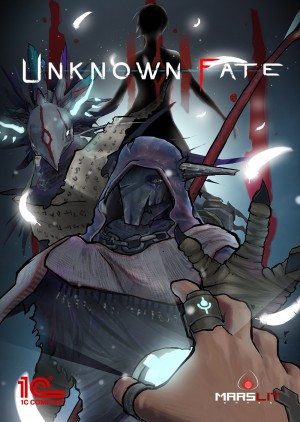
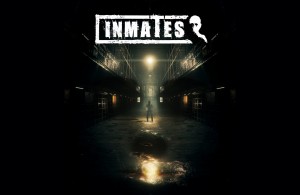
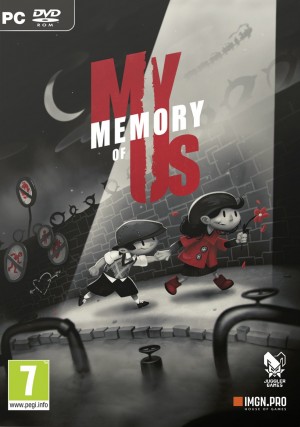
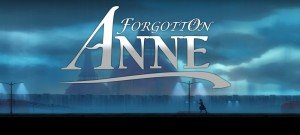

![Event[0] - Game Review](https://cdn.nivoli.com/adventuregamers/images/screenshots/31241/image001__medium.jpg)





